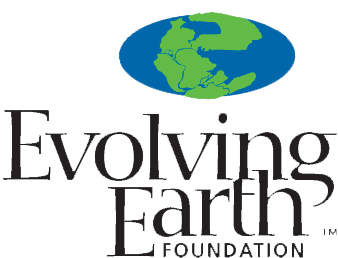Links to Helpful Websites, Data Portals & Organizations
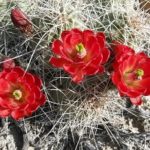 Angiosperm Phylogeny
Angiosperm Phylogeny
Teaching seed plant phylogeny with characterizations of angiosperms and gymnosperms. Non-seed plants are covered more briefly.
Botanical Society of America
Supporting botanical research and education for professionals, educators, students, and amateurs.
Burke Museum – Paleobotany Collections
With approximately 60,000 specimens, The Burke’s collection of fossil leaves, flowers, seeds and fruits, wood, plant microfossils (pollen, plant silica or phytoliths), and fossil insects are the second largest on the West Coast.
The Gymnosperm Database
Basic information for all species and higher-ranked taxa of the gymnosperms, i.e., conifers, cycads, and their allies.
The Plant List
Working list of all known plant species. Comprehensive for species of Vascular plant (flowering plants, conifers, ferns and their allies) and Bryophytes (mosses and liverworts).
The Seed Site
Database of seed images for 600+ plants.
Silvics of North America
Silvical characteristics of about 200 forest tree species and varieties.
Tropicos Database
Nomenclatural, bibliographic, and specimen data accumulated in Missouri Botanical Garden databases. Nearly 1.3 million scientific names and over 4.4 million specimen records.
USDA plant database and distribution maps
PLANTS Database provides standardized information about the vascular plants, mosses, liverworts, hornworts, and lichens of the U.S. and its territories.
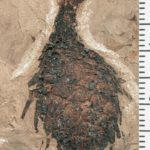 C.L.A.M.P.
C.L.A.M.P.
Obtain ancient climate information from the architecture (physiognomy) of fossil leaves of woody dicot flowering plants.
International Organisation of Palaeobotany
Promotes international cooperation in the study of all types of plant fossils.
Palaeoflora
Database for palaeoclimate reconstructions using the Coexistence Approach.

PalDat – Palynological Database
World’s largest database for Palynological Data from a variety of plant families, including detailed descriptions, images of each pollen grain (LM, SEM and TEM), images of the plant/inflorescence/flower, and relevant literature.
Global Pollen Project
Browse the fastest growing crowd sourced palanological database in the world. This collection is paired with the Global Biodiversity Information Facility and Neotoma.
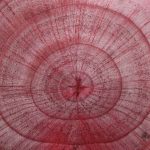 Forestry and Forest Products Institute – Wood Database
Forestry and Forest Products Institute – Wood Database
Databases, including images and descriptions, of Japanese Woods, Wood Specimens, and Microscopic Identification of Japanese Woods.
InsideWood
Database of fossil and modern woody dicots (hardwoods) from more than 200 plant families. Note: Gymnosperm woods (softwoods) are not included.
International Association of Wood Anatomists (IAWA)
Supports education and awareness of wood anatomy in science, technology, conservation of natural resources, and for the public good.
 Burke Museum of Natural History and Culture
Burke Museum of Natural History and Culture
The Burke is a research- and collections-based museum of 16 million objects (and counting!), responsible for Washington state collections of natural and cultural heritage.
Columbia River Basalt Stratigraphy in the Pacific Northwest
Stratigraphic information on the CRBG, which records the late Cenozoic structural evolution of much of the Pacific Northwest. Useful for hydrogeologic, basin evolution, and geologic hazard investigations.
Geological Society of America
GSA encourages cooperative research and public dialogue on geoscience issues and supports all levels of earth-science education.
iNaturalist.org
iNaturalist.org is a place where you can record what you see in nature, meet other nature lovers, and learn about the natural world.
MantlePlumes.org
Discussing the origin of hotspot volcanism.
Paleomap Project
Illustrating the plate tectonic development of the ocean basins and continents, as well as the changing distribution of land and sea during the past 1100 million years.
Stratigraphy.org
Defining global units (systems, series, and stages) of the International Chronostratigraphic Chart, which are the basis for units (periods, epochs, and age) of the International Geologic Time Scale.
USGS Publications Warehouse
The Pubs Warehouse provides access to over 150,000 publications written by USGS scientists over the century-plus history of the bureau
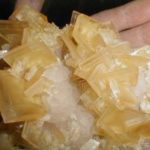 Mindat.org
Mindat.org
World’s largest public database of mineral information.
Smithsonian GeoGallery
Searchable database of mineral and gemstone images at the Smithsonian National Museum of Natural History (NMNH).
Tucson Gem, Mineral, and Fossil Showcase
The largest gem-and-mineral event of its kind in the world takes place every winter in Tucson, Arizona, USA.
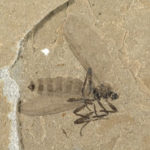 Florissant Fossil Beds National Monument
Florissant Fossil Beds National Monument
Virtual museum and curricula developed by the National Park Service, which integrates taxonomic, museum collection, and publication data for the paleontological resources of Florissant, including about 1700 species of plants and insects.
Fossilworks
Portal for query, download, and analysis tools that utilize the Paleobiology Database’s large relational database assembled by hundreds of paleontologists from around the world.
Guide to the Orders of Trilobites
Trilobite morphology, classification, paleobiology, specimen photos, and more; created and maintained by Dr. Sam Gon III.
University of California Museum of Paleontology
Provides online access to catalogs, research, and exhibits that investigate and promote the understanding of the history of life and the diversity of the Earth’s biota.
